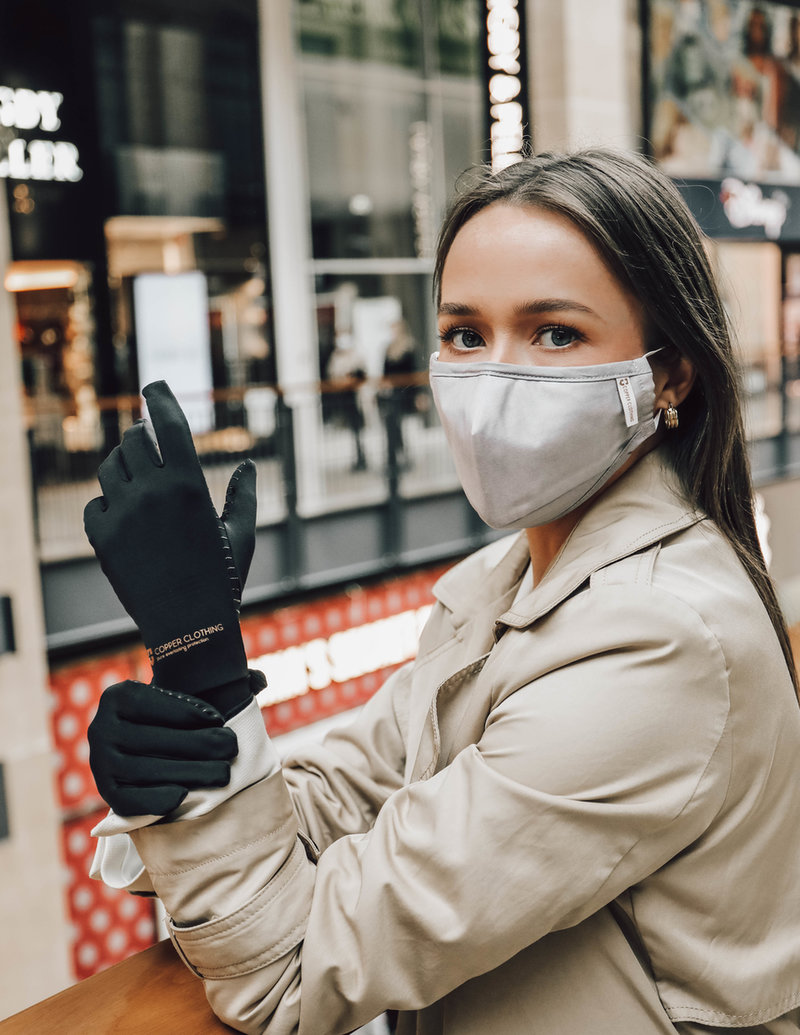Materials
Miracle metal: could copper clothing help fight infection?
Copper has been used for medical purposes since ancient times, and more recent research has confirmed its antimicrobial properties. But can clothing infused with the metal be a realistic alternative to antibiotics and even play a role in fighting Covid-19? Natalie Healey speaks to Copper Clothing’s Rory Donnelly to find out more.

G
emma Wilby credits a pair of £50 pyjamas with saving her life. In September 2012, she caught the ‘superbug’ MRSA after undergoing an emergency caesarean. Doctors at Croydon University Hospital in Surrey, UK tried everything to treat the infection, from powerful antibiotics to maggot therapy, but nothing was working. Things weren’t looking good. But then miraculously, Wilby started to get better. Six weeks after showing signs of improvement, her wound was completely healed.
Hospital-acquired infections such as Wilby’s are becoming increasingly common. And while all eyes are currently on the coronavirus pandemic, there is another infectious disease crisis we mustn’t lose sight of. Antimicrobial resistance (AMR) is rising to dangerously high levels globally. Bacteria are rapidly developing defences to many of the treatments that doctors prescribe to kill them. The World Health Organization warns that without urgent action, we are heading for a post-antibiotic era where common infections and minor injuries could kill.
We need alternative medicines to the ones the bugs are becoming resistant to, which relies on the pharmaceutical industry discovering and developing new compounds that can kill bacteria. But pharmaceuticals aren’t the only potential solution.
Wilby’s pyjamas were infused with a metal used since ancient times to treat infection: copper. In 3200 BC, Egyptians used green copper rust to treat chest wounds and sterilise drinking water. In 1600 BC, Chinese physicians used copper coins to treat heart and stomach pain. And in 1852, French physician Victor Burq discovered people who worked with copper were less likely to die from cholera.
During his research career, microbiologist Bill Keevil at Southampton University has learnt these early scholars were onto something. He found that copper prevents microbe respiration by punching holes in the pathogen’s cell membrane. Copper ions can then enter the cell to destroy the microbe’s genetic code, preventing it from replicating.

Copper infused pyjamas from Copper Clothing. Credit: Copper Clothing
An alternative to antibiotics
Wilby’s nightwear was from Copper Clothing, a retailer based in Caterham, Surrey, UK. Clinical research director Rory Donnelly says that the company has conducted several experiments with the NHS and UK universities to study copper’s role in preventing infection. As well as pyjamas, the firm stocks other garments, from underwear to gloves and even dog beds made from copper-infused fabric.
“The reason copper is so effective at preventing infection is its oligodynamic effect,” says Donnelly. “This is the ability of small amounts of certain metals to exert a lethal effect on pathogenic cells. Some metals are more effective than others, but copper has been identified to be the most potent and cost-effective, due to its reputation for being one of the best conductors of electricity.”
Donnelly thinks that copper could prevent overuse of antibiotics, one of the main contributors to antimicrobial resistance. And it might be a useful defence against wound and surgical site infections, which pose a significant problem in healthcare settings.
The reason copper is so effective at preventing infection is its oligodynamic effect.
“Antibiotic resistance is expected to kill more people than cancer by 2050. It’s clear we need to find new and innovative ways of reducing infections in hospitals across the globe,” says Donnelly.
In 2016, Keevil‘s laboratory found that copper ions kill MRSA on contact. And this year, a team of experts at Croydon University Hospital investigated the effect of copper-wound dressings for women who, like Wilby, had undergone a caesarean section. The researchers found that copper dressings reduced rates of infection compared to standard wound care.
Their results are published in the European Journal of Obstetrics, Gynaecology and Reproductive Biology. A larger trial is underway, which will continue to explore the effectiveness of copper-infused dressings.

Copper Clothing recently introduced a copper mask to its product range. Credit: Copper Clothing
Beating viruses
Bacteria aren’t the only microbes that cause problem for humans. There’s been renewed interest in copper’s ability to fight infection during the coronavirus pandemic. Copper-infused fabrics aren’t yet widely used in PPE, but Copper Clothing has recently introduced a copper mask to its offering.
More research is needed on whether it provides a suitable defence against Covid-19, but early tests in America and Japan have shown promise, finding copper-infused face coverings can eliminate the SARS-CoV-2 virus within half an hour.
Copper Clothing will continue to study copper’s potential role in the medical space. Donnelly says the company is now looking beyond clothing and wound dressings to incorporating copper into devices such as catheters and respirators.
“For both developed and developing countries, we need to start looking at introducing new ways of disease prevention,” he says. “Infusing it into our medical devices on a large scale seems the most logical step.”
We need to start looking at introducing new ways of disease prevention.
Using copper on surfaces is another infection-busting option. In 2017, Fantasilandia in Chile, one of Latin America’s biggest theme parks, replaced its most frequently touched areas with copper in an attempt to reduce the spread of germs. And some hospitals in France have installed copper fittings for the same reason.
Whether copper is a cost-effective choice in healthcare settings remains to be seen, but a University of York study suggests it might be. Researchers predicted that the cost of replacing six frequently touched surfaces in a 20-bed ICU with copper equivalents will be recouped in less than two months due to fewer infections and reduced patient stays.
More research is needed to prove copper really can halt infection in real world settings, but Donnelly believes the initial evidence is promising. “We need cutting-edge solutions if we are to free up time and resources and prevent further loss of life,” he says. “Copper should be used as the first tool in the infection armoury.”